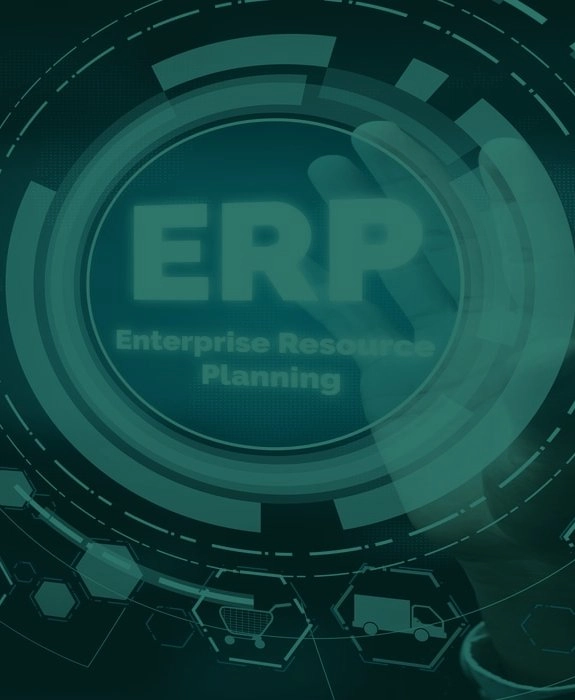Table of Contents
Updated September 2021
With all industries geared towards digital transformation, many businesses have already deployed an Enterprise Resource Planning (ERP) software solution to automate their business processes. An enterprise resource planning software solution handles everything seamlessly from the supply chain management and production line to the manufacturing and delivery of goods.
If you are still in the process of deciding when it is best to implement an ERP system, understand that it takes more than just choosing the right software vendor with the best solutions. It requires having an ERP software development, deployment, and migration plan laid out to ensure that the system provides the greatest benefit to your company with the least amount of risk.
How Do You Develop an Enterprise Software Strategy?
ERP implementation entails hefty costs and requires the engagement of everyone in the company. For the efforts not to go to waste, you must craft an ERP strategy that delineates the steps that should be taken before, during, and after getting an ERP software solution.
Your strategy depends on your specific requirements and needs. Here’s a guide you can follow for your software strategy planning. Tweak the guide to adapt to your company’s unique conditions. Keep in mind that the more detailed your strategy is, the better are your chances for success.
1. Identify key improvement opportunities
Before you set your goals, determine which areas of your business need to be improved. Functional and strategic improvements require knowledge of daily tasks from the ground level. So, interview employees and management and ask about pain points they encounter regularly. Addressing these hitches in the process can lead to better employee performance and improved work productivity.
2. List your implementation goals
Your next step in strategic planning is to identify what you want to achieve upon deployment of your new ERP system. These goals can be business-centric, process-oriented, or a combination of different goals. Are you looking to centralize Human Resources (HR) to track employee performance better? Do you want to streamline your sales process? Knowing your integration goals will help you determine what software features you need. It will also help the software vendor find the best ERP solution for your business operations.
3. Reducing Costs – set a budget
Successful ERP implementation necessitates stringent financial planning. It is not uncommon for businesses to exceed their initial budgets once the system is deployed, especially if no software strategy planning was set in place.
When you set a budget, cover all upfront costs and appropriate funds that will support the entire implementation process. Set a contingency fund to cover any overrun costs. Also, your current infrastructure may require updating or upgrading to support the installation of a new ERP software. So, include these upgrades in the budget as well.
Be upfront with your vendor regarding your budget. If there’s no software solution that fits within your budget, consider putting off the ERP implementation until you have enough funding for it. Otherwise, you might end up wasting money preparing for an ERP software solution you can’t afford to deploy.
4. Create a change management plan
Any ERP software is effective only when people know how to use it properly. You will need a change management plan to reinforce the importance of the ERP solution and its proper use. Allocate training resources to help your employees understand how to use the new software. This training is an essential part of the implementation process and will help maximize the benefits your business can reap from the software.
5. Conduct a risk assessment
Don’t jump on the bandwagon just because everyone else is deploying the latest ERP software. Weigh the cost, risk, and benefits it can bring to your business. An ERP solution does bring high value, but it also comes with high risks, especially when things go wrong during the implementation. Conducting a risk assessment not only helps you weigh the risks but also enables you to be proactive rather than reactive.
Compare potential improvements to your current status. Do they far outweigh any risk you might encounter? In what areas might snags occur, and can these be prevented? Once you identify possible risks, you can address them before the installation begins.
6. Outline an ERP roadmap
An ERP roadmap ensures smooth implementation. Create one even before choosing an ERP software vendor. Your roadmap must include a well-defined set of business objectives. This is where you align all efforts to ensure success.
You must also clearly define the roles and responsibilities of all those involved in the implementation. Assign an internal project management team that can oversee the ERP deployment and ensure that everything is aligned with the set objectives.
Most importantly, your roadmap must identify milestones to monitor the progress of your ERP implementation. Include short-term milestones, comprehensive simulations, piloting, reviews, and other phases of the project.
7. Execute your plan with the right vendor
Once you have a plan in place, find an ERP vendor that can help execute your enterprise software strategy. Be very thorough in choosing your ERP vendor. They must have the expertise to provide software solutions and be reliable enough to provide you with long-term support.
Choose a vendor that has vast experience with ERP projects and can deliver the best software solutions for your business. Partner with a reputable software vendor that offers the deployment method you prefer, whether it’s cloud-based or web-based.
Avoid vendors that offer standardized solutions and those that have software limitations. Your ERP system should grow as your business grows. And your ERP vendor must be able to provide support through this growth as well.
Boost Growth with an ERP Strategy
Indeed, an enterprise resource planning system can take your business from good to great. However, you must have an efficient ERP strategy in place to ensure proper implementation of the software. A good strategic plan will reduce time and money wasted on a software solution that does not meet your business needs. It will ensure that your new ERP software will function well in your business environment. Ultimately, this would enhance your business processes and lead to better profitability.
Does Your Business Need Custom ERP Software Development?
If you are looking to get custom software developed we can help. Our web-based solutions are guaranteed to improve the competitiveness, efficiency and profitability of your business.
Here are some of the questions asked to us by our Manufacturing Industry and Financial Services Application Development Clients:
Q: I have a fairly decent idea of what I want to build. But, I do not have detailed specifications for my project. Is this alright?
A: Don’t worry if you don’t know all of the technical stuff. We’re happy to discuss your ideas and advise you. We have a highly experienced business team that can comfortably translate business requirements into software project specifications, user stories and wireframes. Most clients that come to us don’t have specifications, we develop these for them. We have satisfied global clients from many different industries – all who were at very different stages of planning. To read some reviews of our Custom Software & Web Application Development Services check out our testimonials page.
Q: Why should I hire Asahi Technologies for my custom software development project? A: At Asahi Technologies, we value the partnerships we create. Our clients represent more than just a project. As your technology partners we’re dedicated to helping you achieve your unique business needs by leveraging complex technologies and providing you the support and maintenance you require after a project is launched. We value creating purposeful and innovative projects that help your business grow, become more profitable and more efficient.
With head office in New York, we have experience working with the most demanding clients, for instance, in the financial industry. We have a strong business strategy team, which listens to client challenges carefully before crafting the most suitable technology solution and our technology team is passionate about building quality software solutions for clients. We blend the best and the brightest creative thinkers and engineers who are dedicated to excellence and revolutionizing your business with unique web solutions.
Q: Who will be my point of contact at Asahi Technologies?
A: The project manager assigned to your project will usually be your primary point of contact throughout the course of the engagement with Asahi Technologies.
Let Asahi Technologies help you develop your next custom manufacturing ERP software for your business.
Want to read some of the testimonials of our New York software development company services?
Stay ahead of the game with our helpful resources

4 digital solutions to address common application performance issues
High network latency, memory leaks, slow page loads, heavy CPU usage, and unresponsive servers are all typical performance issues we’ve experienced at some point when using or accessing digital applications. With how easy they occur in projects across verticals, you might be wondering whether the development teams behind these programs have done enough due diligence prior to the release. But human errors and oversight aren’t always the culprit. The reality is that while developers can strive to develop a fully functioning program with virtually no apparent faults upon delivery, no software is truly error-free. Even the most rigorously tested applications

6 useful tips for creating more robust application lifecycle management
As digital technology becomes the norm, software acquisition is now key to gaining a competitive edge in today’s market. Be it as a value offering tailored to consumers or a productivity tool to run complex processes, custom software undeniably helps companies drive growth and deliver value more efficiently. Just as necessary as having a proprietary application is prescribing a standard procedure to govern and maintain its utility. This is to ensure that your business can develop or adopt the right type of software—one that can fully cater to your business needs while keeping disruption to a minimum across critical milestones.

5 major roadblocks businesses must overcome when transitioning into a new software environment
As the business landscape becomes increasingly saturated, staying ahead of the curve often means embracing disruptive technologies to meet the fickle market demands. In most cases, this entails knowing when to pivot your current strategy to an entirely new solution. But recognizing the importance of digital shift is one thing; implementing the necessary IT upgrade is another. A global survey by Deloitte has found that although 87% of companies manage to identify the impact of digital trends on their industries, only 44% have adequately prepared for the coming disruptions. This vast disconnect between organizational expectations and conditions in the field

Is cloud computing the answer to better software development?
Cloud computing is perhaps not a term often heard in daily conversations, but it is one with a far-reaching impact on our technological needs. From expansive options of online data storage to numerous suites of web-based productivity tools like Google Workspace, nearly everyone has used a cloud-enabled technology. Over the last decade, this high degree of versatility also underpins the rapid cloud uptake among businesses. In fact, one survey has found that 94% of companies have already shifted their computing workloads on cloud platforms to varying extents. Unsurprisingly, the market size for cloud technology continues to grow exponentially. With a



